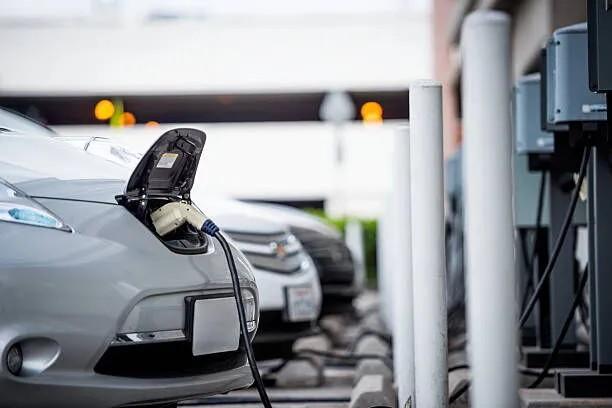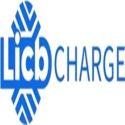Notifications

8 minutes, 41 seconds
-35 Views 0 Comments 0 Likes 0 Reviews

As a leading EV charger manufacturer in China, LiCB Charge offers reliable AC and DC electric vehicle charging stations along with comprehensive charging solutions.The electric vehicle (EV) revolution is reshaping the automotive and energy industries, driving a shift towards sustainable transportation. As EV adoption accelerates, the infrastructure supporting these vehicles becomes increasingly critical. Two essential players in this ecosystem are the Charge Point Operator (CPO) and the Electro Mobility Service Provider (EMSP). While both are integral to the EV charging landscape, their roles, responsibilities, and areas of focus differ significantly. This article explores the nuances of these two entities, highlighting their functions, differences, and how they collaborate to create a seamless charging experience for EV users.
A Charge Point Operator (CPO) is a vital component of the eMobility sector, responsible for deploying, managing, and maintaining EV charging infrastructure. CPOs are the backbone of the EV charging network, ensuring that charging stations are available, reliable, and operational. Their responsibilities include a wide range of activities, such as:
CPOs identify strategic locations for charging stations, secure permits, and install the necessary hardware. They collaborate with electric vehicle supply equipment (EVSE) vendors to select and deploy charging units tailored to the needs of EV drivers.
In addition to the physical installation, CPOs manage the network infrastructure that supports charging stations. This involves overseeing backend software for energy management, user authentication, and transaction processing.
CPOs are responsible for ensuring the smooth operation of charging stations by monitoring their performance, troubleshooting issues, and performing regular maintenance to minimize downtime.
CPOs often integrate energy management systems to optimize power usage, reduce costs, and support grid stability—an important consideration as the demand for EV charging grows.
CPOs establish and maintain communication systems that connect charging hardware with backend software, enabling real-time data exchange and remote management.
In summary, CPOs are the architects and caretakers of the physical and digital infrastructure that powers the EV charging network. Their work ensures EV drivers have access to reliable and efficient charging solutions.
While CPOs focus on infrastructure, Electro Mobility Service Providers (EMSPs) play a complementary role by connecting EV drivers with charging points. EMSPs specialize in developing and operating platforms that enhance the user experience, making it easier for drivers to locate, access, and pay for charging services. Key functions of an EMSP include:
EMSPs develop mobile apps and websites that serve as interfaces between EV drivers and charging stations. These platforms provide real-time information about charging point locations, availability, and pricing.
A primary function of an EMSP is to facilitate hassle-free payments for charging sessions. They integrate payment gateways and offer various payment options, including subscription plans, pay-as-you-go models, and roaming agreements with other EMSPs.
EMSPs often collaborate with other service providers to enable roaming, allowing users to access charging networks across different regions or countries using a single account or app.
EMSPs provide customer support services to assist users with issues related to charging sessions, payments, or platform usage.
EMSPs collect and analyze user data to offer personalized services, optimize charging station utilization, and provide valuable insights to CPOs and other stakeholders.
In summary, EMSPs act as the bridge between EV drivers and charging infrastructure, ensuring a smooth and user-friendly experience. Their focus is on enhancing accessibility, convenience, and satisfaction for end-users.
While both CPOs and EMSPs contribute to the EV charging ecosystem, their roles and focus areas are distinct. Here are the key differences:
CPO: Focuses on the physical and digital infrastructure of EV charging. This includes site selection, hardware installation, network management, and maintenance.
EMSP: Focuses on user interaction and service delivery, including developing platforms to help drivers find, access, and pay for charging services.
CPO: Prioritizes the reliability, efficiency, and scalability of charging infrastructure, ensuring stations are operational and capable of meeting growing demand.
EMSP: Concentrates on user experience, offering intuitive interfaces, seamless payment solutions, and customer support to enhance satisfaction.
CPO: Typically has limited direct interaction with end-users, focusing more on the hardware, software, and energy systems that support charging stations.
EMSP: Interacts directly with EV drivers through platforms that provide real-time information, support, and payment solutions.
CPO: Offers services such as infrastructure deployment, network management, energy optimization, and maintenance.
EMSP: Provides platform development, payment processing, roaming agreements, and customer support.
In some cases, the lines between CPOs and EMSPs may blur, particularly when a CPO expands its role to include service provision. For example, a CPO that develops its own mobile app for users to locate and pay for charging sessions effectively becomes an EMSP as well. This integration allows the CPO to control both the infrastructure and the user experience, creating a vertically integrated service model.
However, this dual role requires significant resources and expertise. The CPO must invest in platform development, customer support, and payment systems while continuing to manage physical and digital infrastructure. Despite these challenges, a vertically integrated model offers several advantages, such as greater control over the user experience, increased revenue streams, and enhanced brand loyalty.
The eMobility ecosystem depends on the collaboration of various stakeholders, with CPOs and EMSPs playing pivotal roles. While CPOs focus on building and maintaining the infrastructure that powers EVs, EMSPs ensure that drivers can easily access and pay for charging services. Understanding the differences between these two entities is essential to appreciating the complexity and interdependence of the EV charging network.
As the EV market continues to grow, the roles of CPOs and EMSPs may evolve, with some entities choosing to integrate both functions to offer a comprehensive solution. Regardless of how the landscape changes, the ultimate goal remains the same: to provide reliable, accessible, and user-friendly charging solutions that support the transition to sustainable transportation.
By working together, CPOs and EMSPs can drive the adoption of electric vehicles, reduce carbon emissions, and pave the way for a cleaner, greener future.Know more about Google SEO Directory
China EV Chargers EV Charger Manufacturer Smart EV Chargers Electric Car Chargers Electric Vehicle Chargers Electric Car Charging Stations

